Measuring Electromagnetic Properties of Vegetal Soil for Wireless Underground Sensor Networks in Precision Agriculture
Abstract
1. Introduction
2. Materials and Methods
- Voltage-Controlled Oscillator (VCO): This device generates a Continuous Wave (CW) signal, which is essential for the measurement process.
- Measurement Module: This module includes the following components:
- –
- Power Detector: Measures the power levels of the signals.
- –
- Reflectometer: Performs reflectometry measurements in the frequency domain, enabling precise determination of reflection coefficients.
- Processing Module: Driven by an Analog-to-Digital Converter (ADC), this module orchestrates the calibration process and displays the data collected from the measurement module. It ensures accurate interpretation and visualization of the data.
- Probe: The probe is employed to measure the dielectric properties of the soil. It integrates various components to harmonize with the soil environment, ensuring accurate and reliable measurements.
2.1. Frequency Band Selection
- 433 MHz LoRaWAN Network: This network operates in the 433 MHz frequency band, commonly used for short-range, low-power communications worldwide. It offers good underground penetration through obstacles and is suitable for remote control Wireless Underground Sensor Networks (WUSNs) and IoT applications.
- 868 MHz LoRaWAN Network: This network operates in the 868 MHz frequency band, allocated for short-range, low-power communications in Europe and certain other regions. It offers an extended range compared to the 433 MHz network, making it a preferred choice for IoT, smart city applications, and industrial monitoring.
2.2. The Probe
2.2.1. Capacitor Sizing
2.2.2. Capacitance Selection
- : vacuum permittivity;
- : soil permittivity;
- r: radius of the circular parallel plate capacitor;
- d: separation between capacitor plates.
2.3. Electrical Soil Model
- : conductivity in Siemens;
- a: area of electrical plates in cm2;
- d: distance between capacitor plates in cm;
- r: radius of the section in cm.
2.4. Underground Probe Design
2.4.1. Coil Inductance Selection
- : angular frequency;
- : resonance frequency;
- : coil inductance;
- C: total capacitance of the probe capacitor filled with soil.
2.4.2. Varactor Selection
2.4.3. Dielectric Permittivity Estimation
- : energy storage of the dielectric permittivity;
- : dielectric losses.
2.4.4. Transmission Line
- : load impedance;
- l: electrical length of the transmission line;
- : propagation constant of the transmission line;
- : characteristic impedance of the transmission line.
3. Results and Discussion
- In the region of the measured self-resonance frequency at 433 MHz, even a minor difference in fixture design and calibration can significantly impact the readings, leading to either a large positive inductance or a large negative capacitance.
- The effect of residual fixture capacitance is more pronounced with lower-value inductors, while it is often negligible for higher values.
- Slight differences in fixture design and calibration can have substantial effects on the calculated dielectric permittivity.
- The poor estimation of dielectric permittivity for low values can be attributed to the limited reflection coefficient at the resonance frequency, restricting it to the self-resonance frequency.
4. Conclusions
Author Contributions
Funding
Institutional Review Board Statement
Informed Consent Statement
Data Availability Statement
Acknowledgments
Conflicts of Interest
Abbreviations
| VCO | Voltage-Controlled Oscillator |
| MHz | Megahertz |
| WSNs | Wireless Sensor Networks |
| WUSN | Wireless Underground Sensor Network |
| IoT | Internet of Things |
| TDR | Time Domain Reflectometry |
| FDR | Frequency Domain Reflectometry |
| CW | Continuous Wave |
| ADC | Analog-to-Digital Converter |
| UHF | Ultra-High Frequency |
| LoRa | Long-Range |
| KHz | Kilohertz |
| CRC | Cyclic Redundancy Check |
| RSSI | Received Signal Strength Indicator |
| RF | Radio Frequency |
| ISM | Industrial, Scientific, and Medical frequency bands. |
References
- Musa, P.; Sugeru, H.; Wibowo, E.P. Wireless Sensor Networks for Precision Agriculture: A Review of NPK Sensor Implementations. Sensors 2024, 24, 51. [Google Scholar] [CrossRef] [PubMed]
- Salam, A.; Vuran, M.C.; Irmak, S. Di-Sense: In-situ real-time permittivity estimation and soil moisture sensing using wireless underground communications. Comput. Netw. 2019, 151, 3141. [Google Scholar] [CrossRef]
- Hardie, M.; Hoyle, D. Underground Wireless Data Transmission Using 433-MHz LoRa For Agriculture. Sensors 2019, 19, 4232. [Google Scholar] [CrossRef] [PubMed]
- Salam, A.; Raza, U. Electromagnetic Characteristics of the Soil; Springer: Berlin/Heidelberg, Germany, 2020. [Google Scholar]
- Abdorahimi, D.; Sadeghioon, A.M. Comparison of Radio Frequency Path Loss Models in Soil for Wireless Underground Sensor Networks. J. Sens. Actuator Netw. 2019, 8, 35. [Google Scholar] [CrossRef]
- Disale, A.S.; Chavan, D.P.; Alameen, A.S.; Undre, P.B. Soil Characterization Using Physical and Chemical Properties. J. Phys. Conf. Ser. 2020, 1644, 012026. [Google Scholar] [CrossRef]
- Wohwe Sambo, D.; Forster, A.; Yenke, B.O.; Sarr, I.; Gueye, B.; Dayang, P. Wireless Underground Sensor Networks Path Loss Model for Precision Agriculture (WUSN-PLM). IEEE Sens. J. 2020, 20, 5298–5313. [Google Scholar] [CrossRef]
- Zhou, Q.; Yao, X.; Hu, J. Study on the propagation characteristic of electromagnetic waves based on WUSN. J. Electromagn. Waves Appl. 2021, 35, 1708–1718. [Google Scholar] [CrossRef]
- Attard, G.; Rossier, Y.; Winiarski, T.; Eisenlohr, L. Urban underground development confronted by the challenges of groundwater resources: Guidelines dedicated to the construction of underground structures in urban aquifers. Land Use Policy 2017, 64, 461–469. [Google Scholar] [CrossRef]
- Wang, J.; Lim, E.G.; Leach, M.P.; Wang, Z.; Man, K.L. Open-Ended Coaxial Cable Selection for Measurement of Liquid Dielectric Properties via the Reflection Method. Math. Probl. Eng. 2020, 2020, 8942096. [Google Scholar]
- He, H.; Turner, N.C.; Aogu, K.; Dyck, M.; Feng, H.; Si, B.; Wang, J.; Lv, J. Time and frequency domain reflectometry for the measurement of tree stem water content: A review, evaluation, and future perspectives. Agric. For. Meteorol. 2021, 306, 108442. [Google Scholar] [CrossRef]
- Cheng, J.; Zhang, Y.; Yun, H.; Wang, L.; Taylor, N. A Study of Frequency Domain Reflectometry Technique for High-Voltage Rotating Machine Winding Condition Assessment. Machines 2023, 11, 883. [Google Scholar] [CrossRef]
- Liang, C.; Bai, Q.; Yan, M.; Wang, Y.; Zhang, H.; Jin, B. A Comprehensive Study of Optical Frequency Domain Reflectometry. IEEE Access 2022, 9, 41647–41668. [Google Scholar] [CrossRef]
- Said, M.; Boulejfen, N. Study Soil as an Electrical Model for Vegetal Characterization System. In Proceedings of the 2023 22nd Mediterranean Microwave Symposium (MMS), Sousse, Tunisia, 30 October–1 November 2023. [Google Scholar]
- Moiroux-Arvis, L.; Cariou, C.; Chanet, J.P. Evaluation of LoRa technology in 433-MHz and 868-MHz for underground to above ground data transmission. Comput. Electron. Agric. 2022, 194, 106770. [Google Scholar] [CrossRef]
- ITU-T. Low Power Protocol for Wide Area Wireless Networks; ITU: Geneva, Switzerland, 2021; Available online: https://standards.globalspec.com/std/14487600/y-4480 (accessed on 10 December 2024).
- Šarolić, A.; Matković, A. Dielectric Permittivity Measurement Using Open-Ended Coaxial Probe—Modeling and Simulation Based on the Simple Capacitive-Load Model. Sensors 2022, 22, 6024. [Google Scholar] [CrossRef]
- Mandrić Radivojević, V.; Rupčić, S.; Srnović, M.; Benšić, G. Measuring the Dielectric Constant of Paper Using a Parallel Plate Capacitor. Int. J. Electr. Comput. Eng. Syst. 2018, 9, 1–10. [Google Scholar] [CrossRef]
- Aljoumani, B.; Sanchez, J.; Wessolek, G. A Stochastic Linear Model to Evaluate the Dielectric Constant—Electrical Conductivity Relation of a Sandy Soil Using TDR Records; European Union: Luxembourg, 2018. [Google Scholar]
- Bertocco, M.; Parrino, S.; Peruzzi, G.; Pozzebon, A. Estimating volumetric water content in soil for IoT contexts by exploiting RSSI-based augmented sensors via machine learning. Sensors 2023, 23, 2033. [Google Scholar] [CrossRef]
- Payero, J.O. An Effective and Affordable Internet of Things (IoT) Scale System to Measure Crop Water Use. Agric. Eng. 2024, 6, 823–840. [Google Scholar] [CrossRef]
- de Melo, D.A.; Silva, P.C.; da Costa, A.R.; Delmond, J.G.; Ferreira, A.F.A.; de Souza, J.A.; de Oliveira-Júnior, J.F.; da Silva, J.L.B.; da Rosa Ferraz Jardim, A.M.; Giongo, P.R.; et al. Development and Automation of a Photovoltaic Powered Soil Moisture Sensor for Water Management. Hydrology 2023, 10, 166. [Google Scholar] [CrossRef]
- Vilenskiy, A.R.; Makurin, M.N.; Poshisholina, E.I.; Lee, C. Design Technique for Varactor Analog Phase Shifters with Equalized Losses. Prog. Electromagn. Res. C 2018, 86, 1–16. [Google Scholar] [CrossRef]
- Available online: https://www.skyworksinc.com/en/Products/Diodes/SMV1801-079LF (accessed on 10 December 2024).
- Pantoja, J.J.; Gutierrez, S.; Pineda, E.; Martinez, D.; Baer, C.; Vega, F. Modeling and Measurement of Complex Permittivity of Soils in UHF. IEEE Geosci. Remote Sens. Lett. 2019, 17, 1109–1113. [Google Scholar] [CrossRef]
- La-Gioia, A.; Porter, E.; Merunka, I.; Shahzad, A.; Salahuddin, S.; Jones, M.; O’Halloran, M. Open-Ended Coaxial Probe Technique for Dielectric Measurement of Biological Tissues: Challenges and Common Practices. Diagnostics 2018, 8, 40. [Google Scholar] [CrossRef] [PubMed]
- Guihard, V.; Taillade, F.; Balayssac, J.P.; Steck, B.; Sanahuja, J. Permittivity measurement of cementitious materials and constituents with an open-ended coaxial probe: Combination of experimental data, numerical modelling and a capacitive model. RILEM Tech. Lett. 2019, 4, 39–48. [Google Scholar] [CrossRef]
- Zahedi, A.; Boroumand, F.A.; Aliakbrian, H. Analytical transmission line model for complex dielectric constant measurement of thin substrates using T-resonator method. IET Microw. Antennas Propag. 2020, 14, 2027–2034. [Google Scholar] [CrossRef]
- Sato, Y.; Ogura, N.; Yamaguchi, Y.; Ju, Y. Development of a sensor for dielectric constant measurements utilizing time-domain measurement with a vector network analyzer. Measurement 2020, 169, 108530. [Google Scholar] [CrossRef]
- Stanley, M.; Parker-Jervis, R.; Skinner, J.; DeGraaf, S.; Lindström, T.; Cunningham, J.E.; Ridler, N.M. Determination of the Permittivity of Transmission Lines at Milli-Kelvin Temperatures. IEEE Access 2023, 11, 60626–60634. [Google Scholar] [CrossRef]
- Najoji, S.D.; Abubakar, M. Parallel Plate Technique Determination of Dielectric Constant and Strength of Plastic. Int. J. Sci. Eng. Res. 2020, 11, 831–833. [Google Scholar]
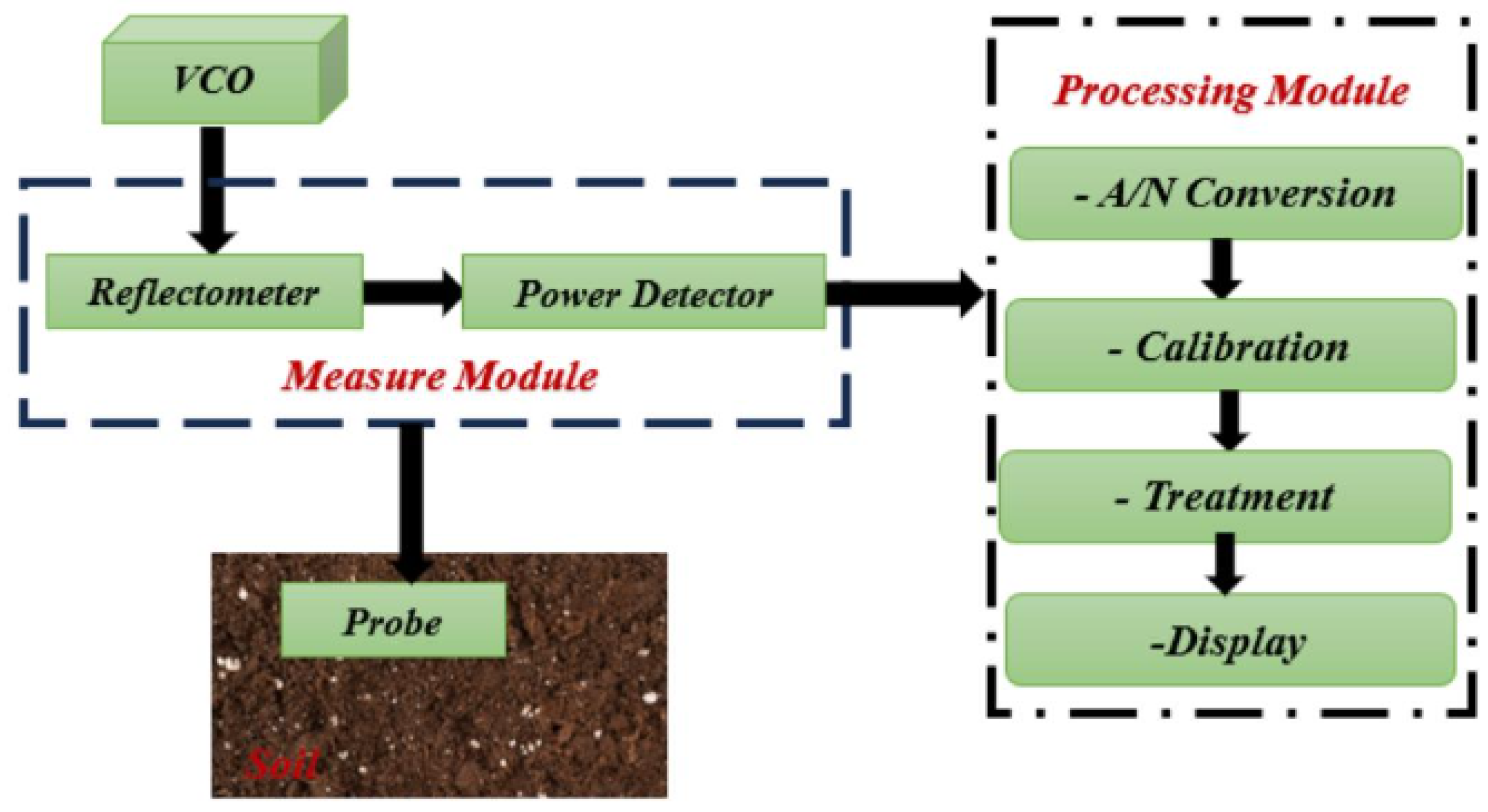
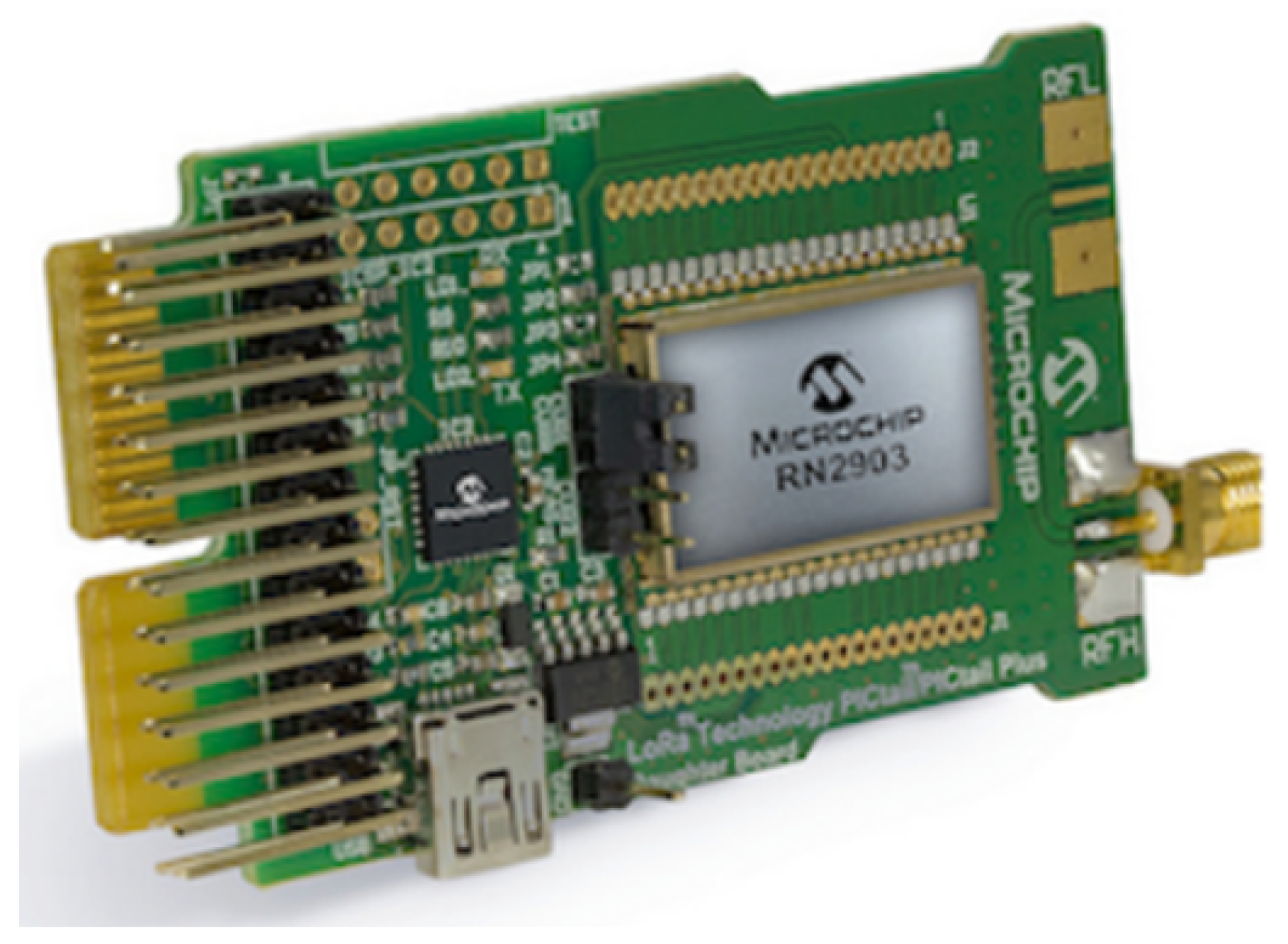
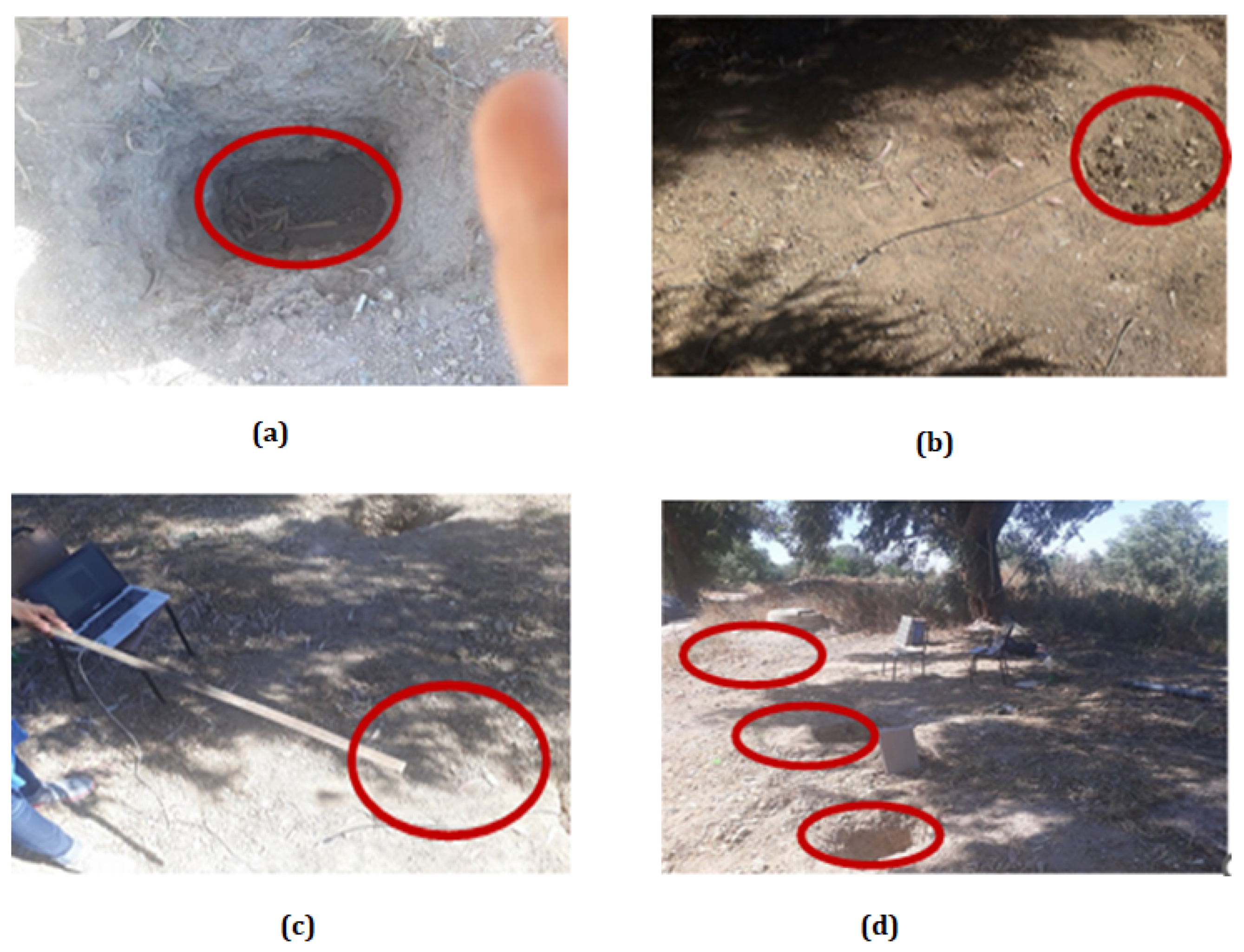

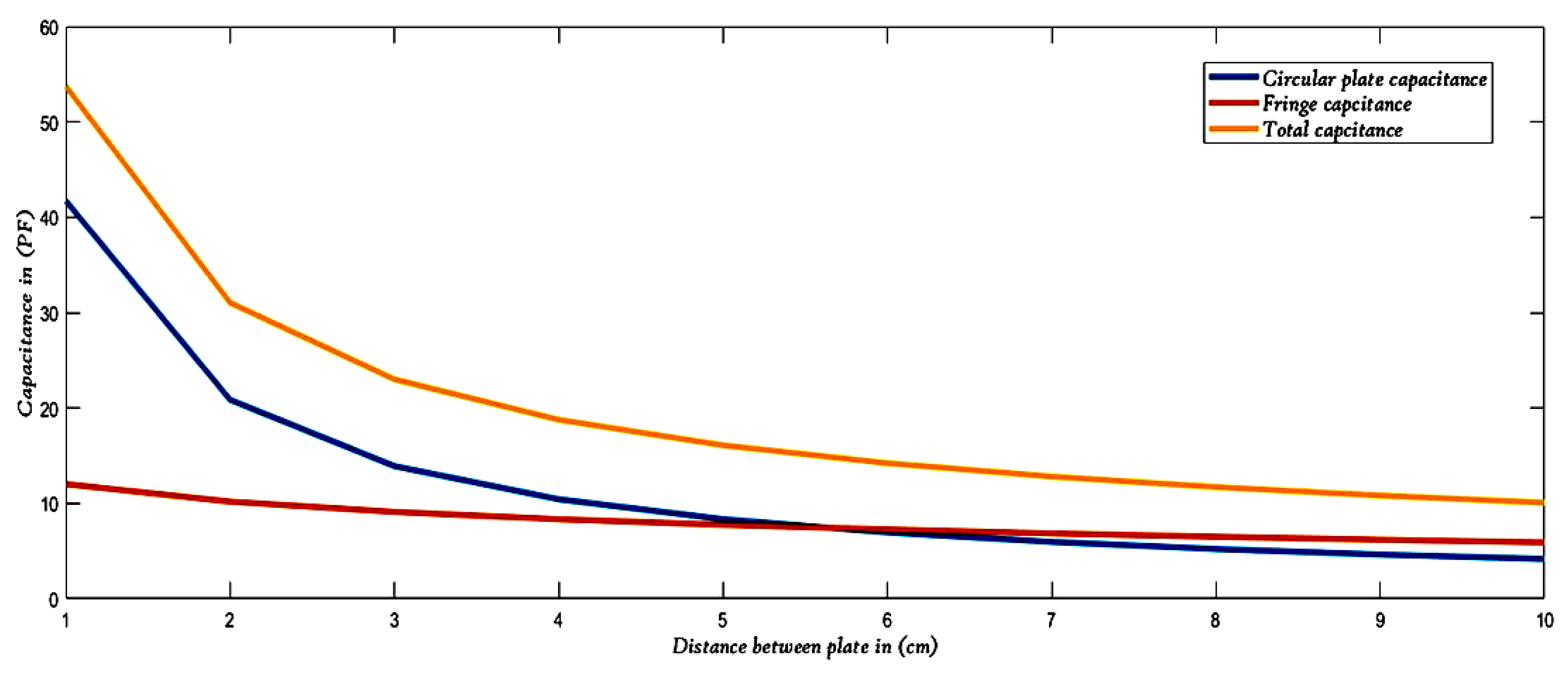
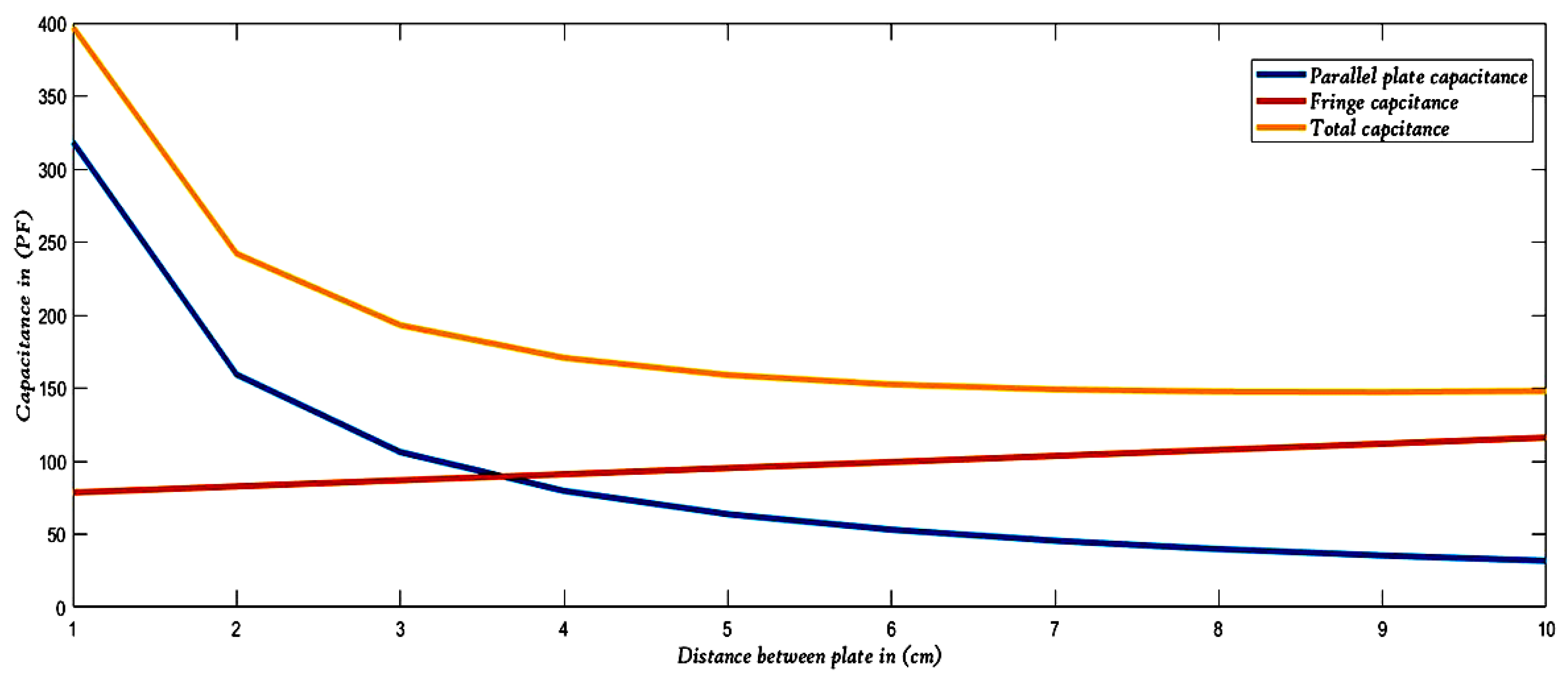
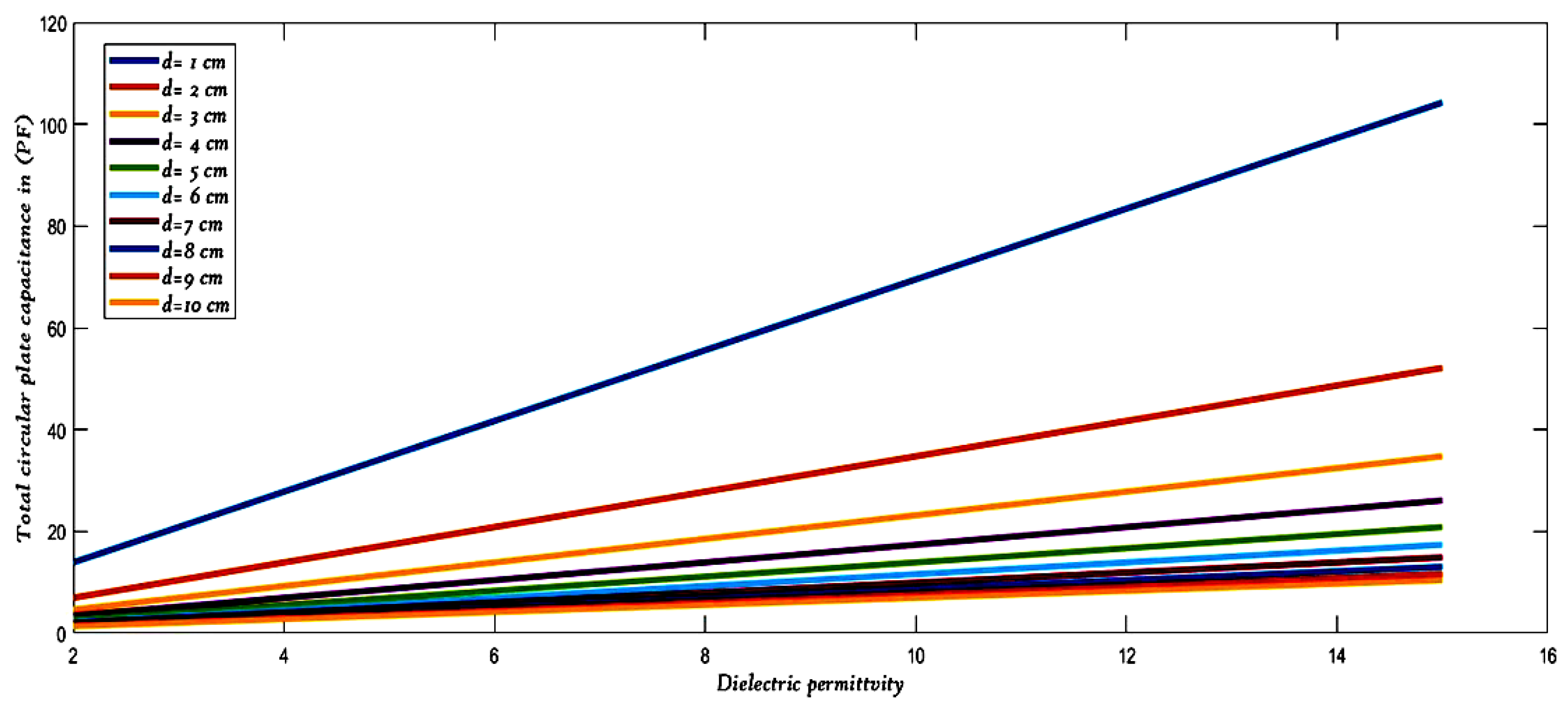

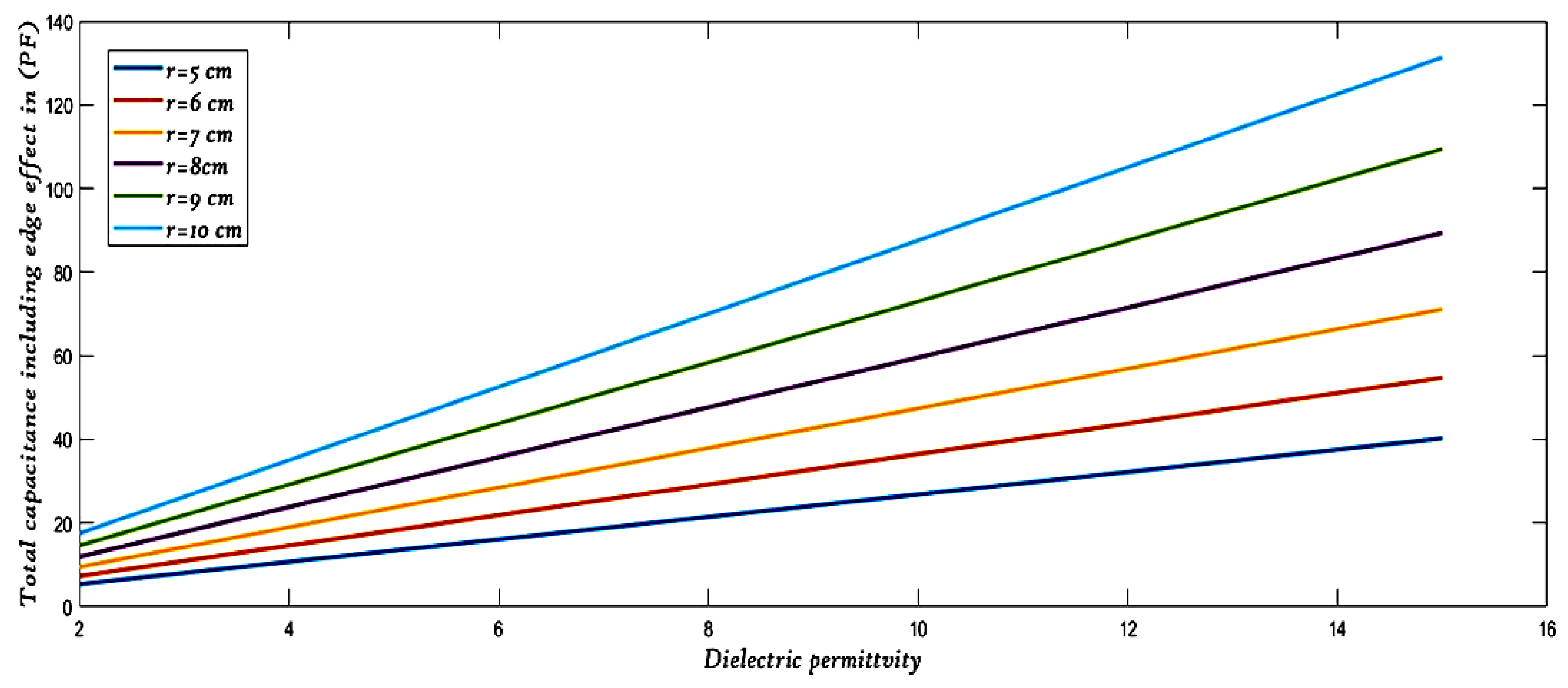

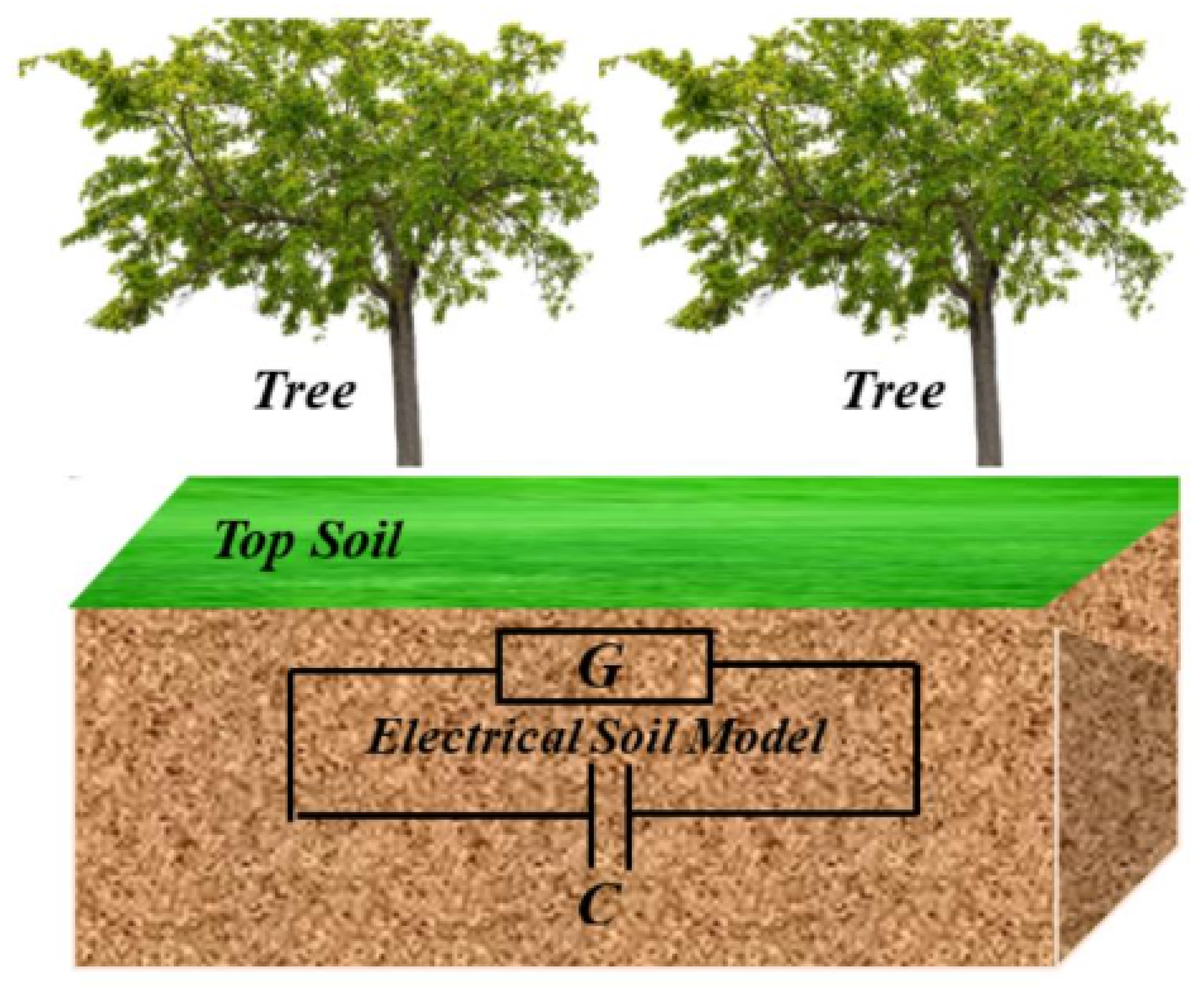
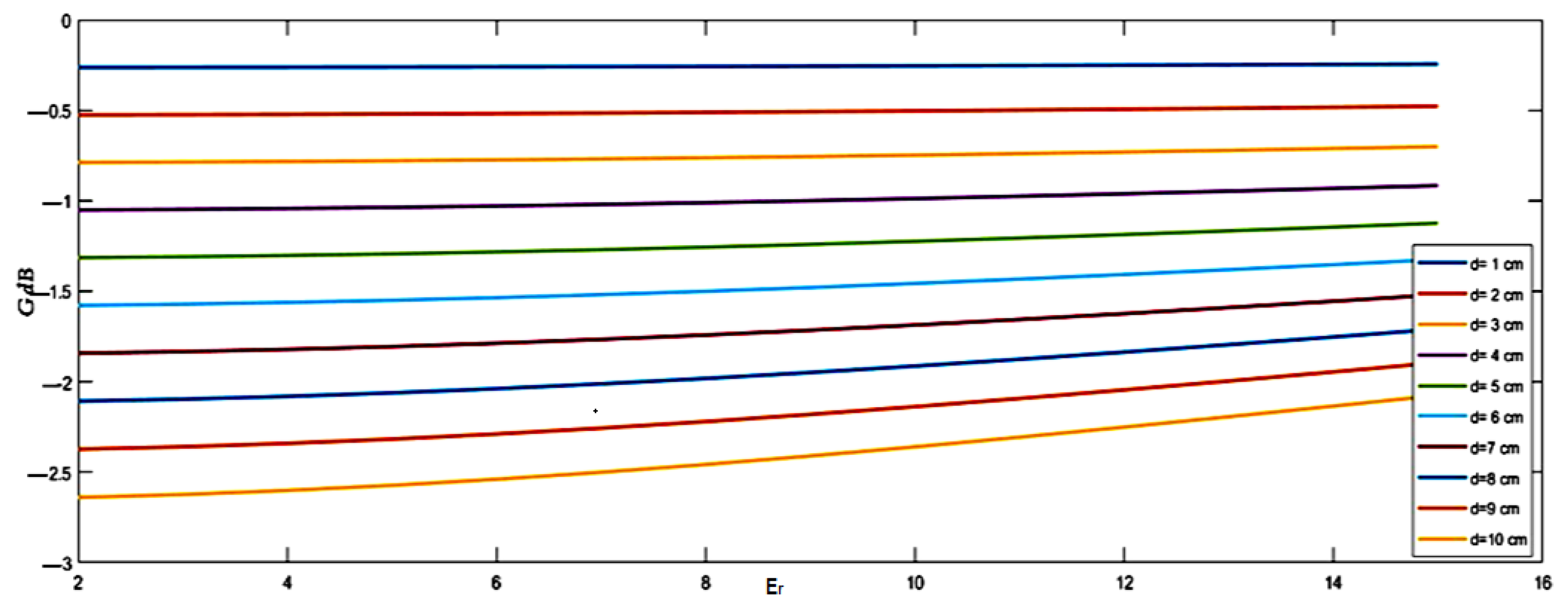

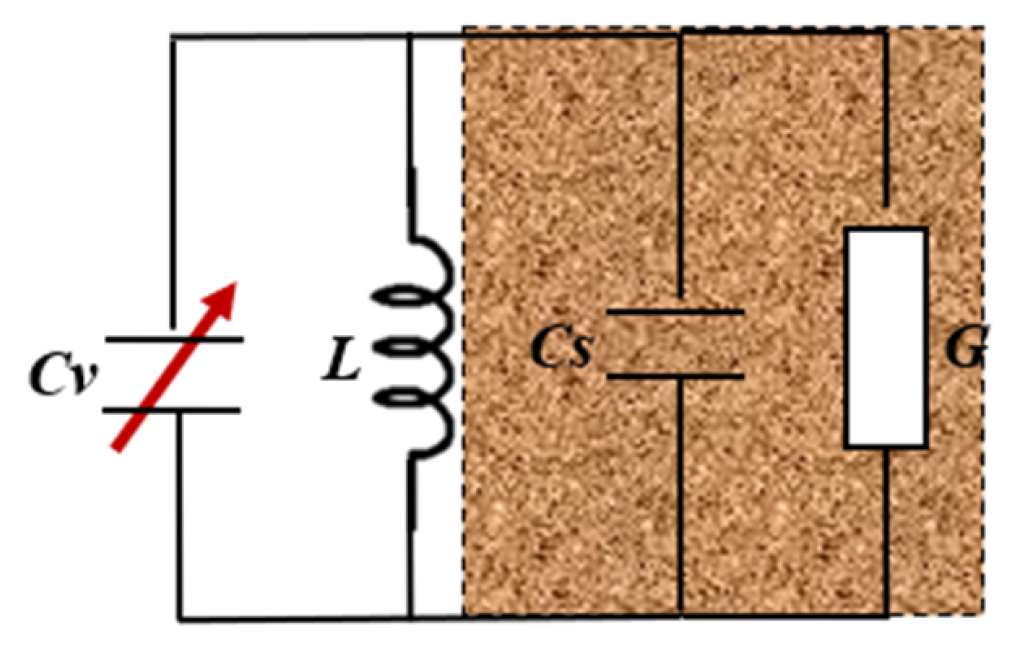
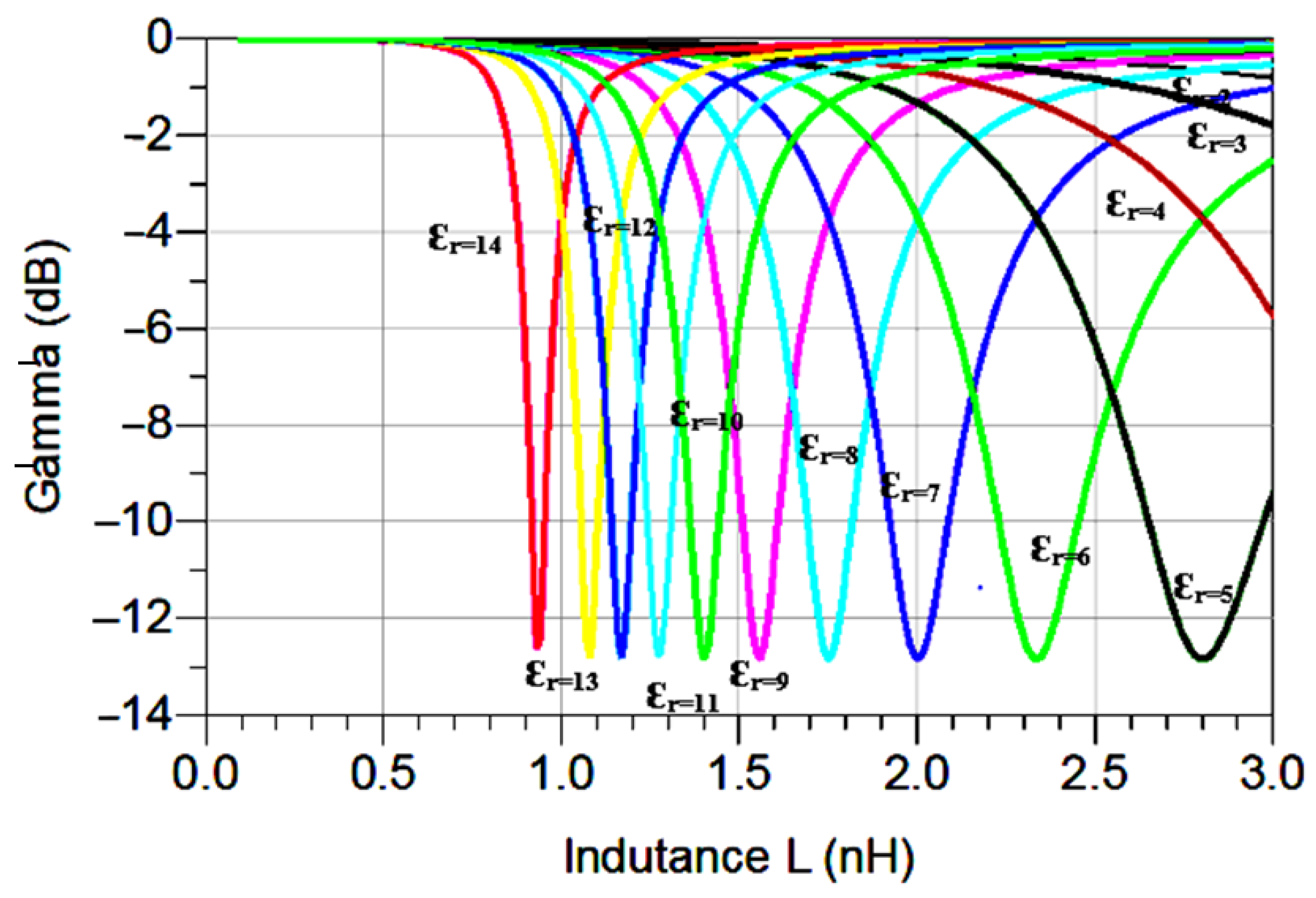
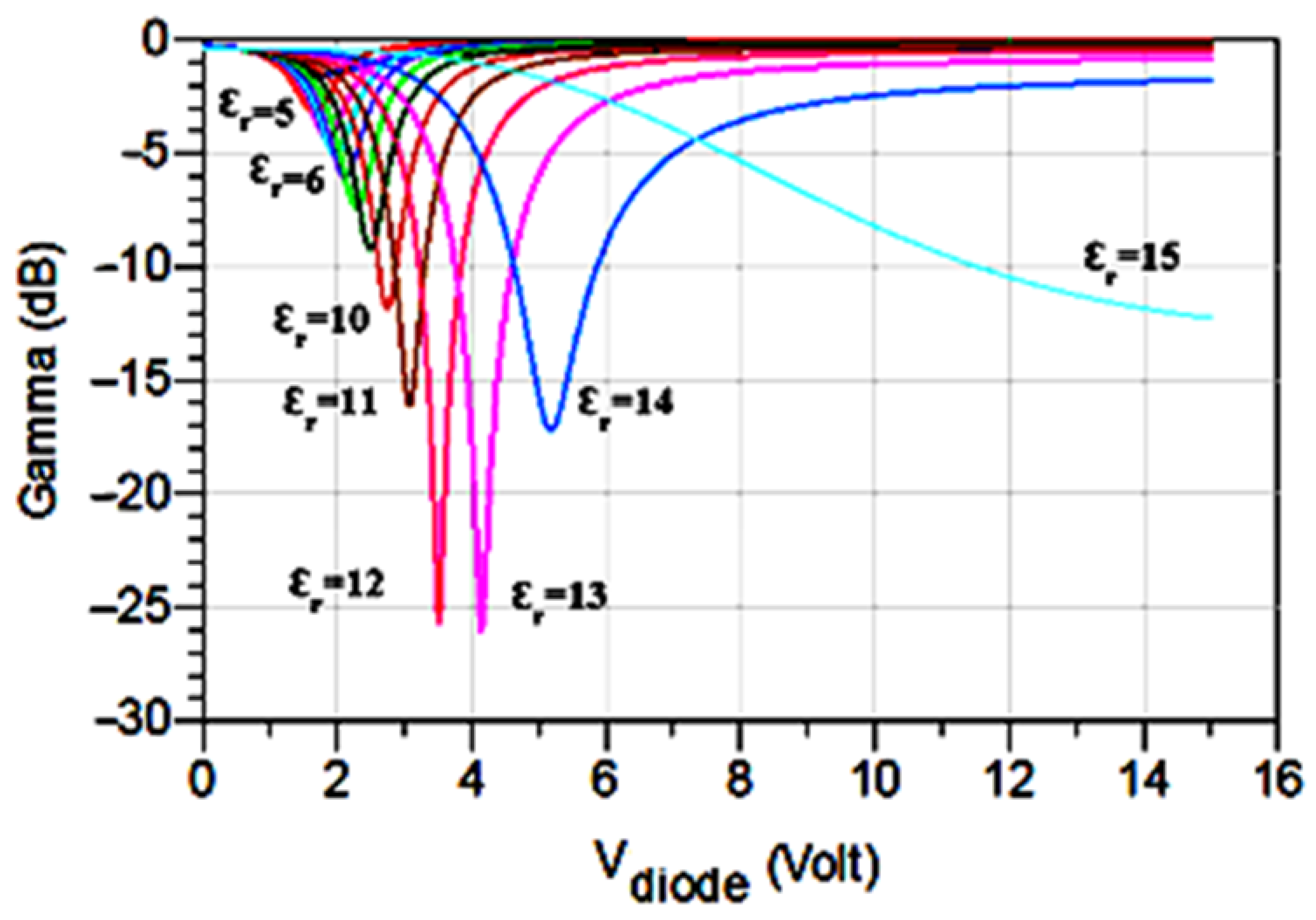
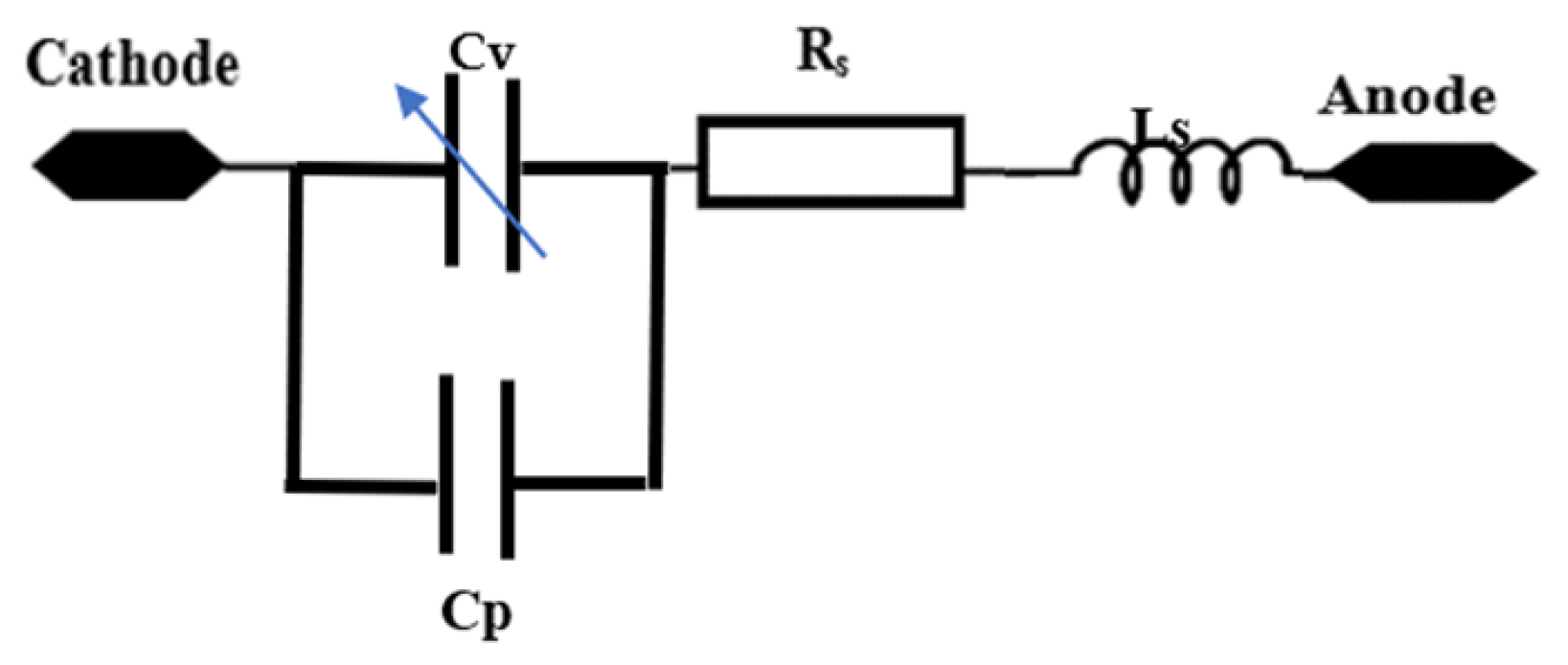
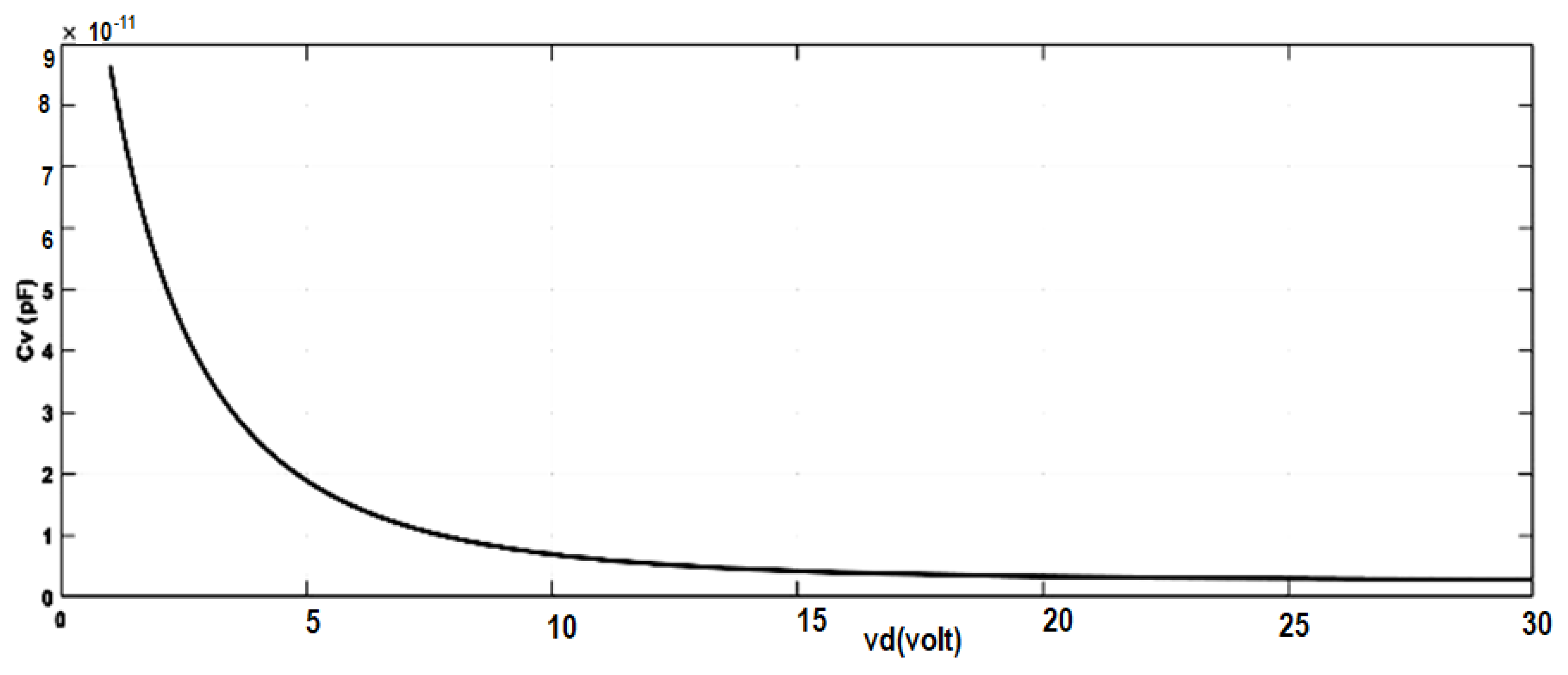

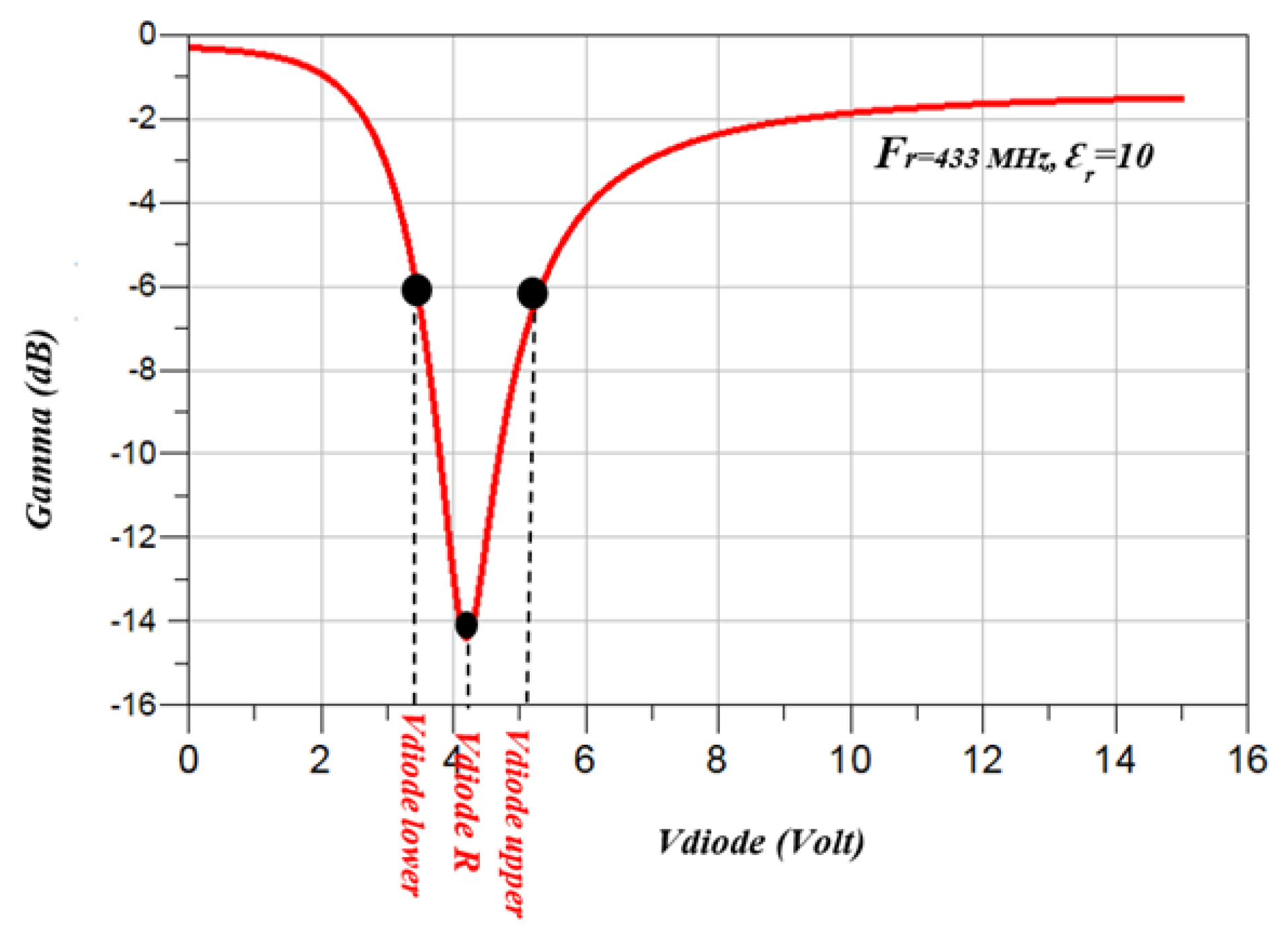

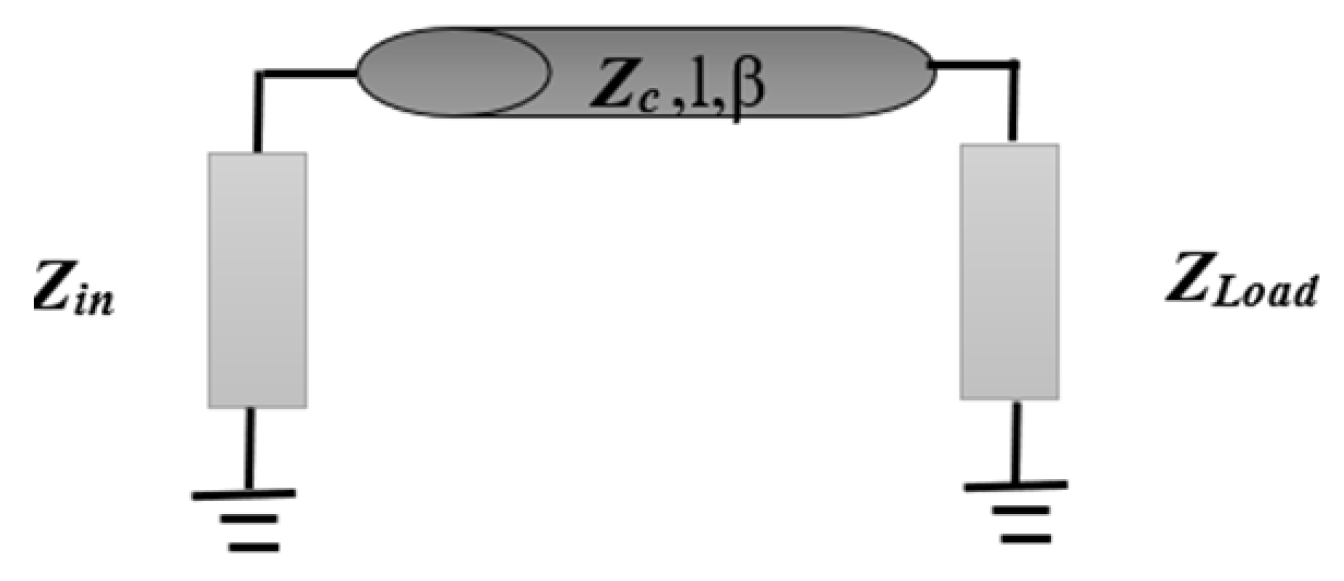
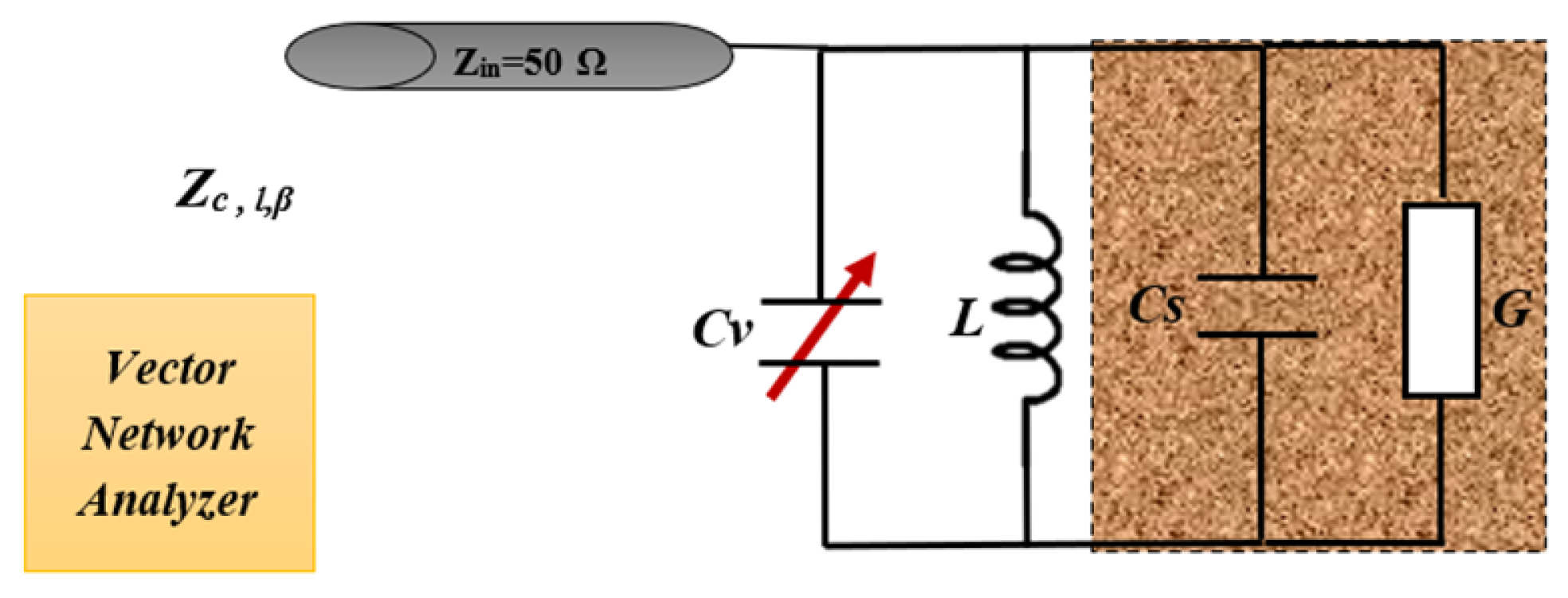
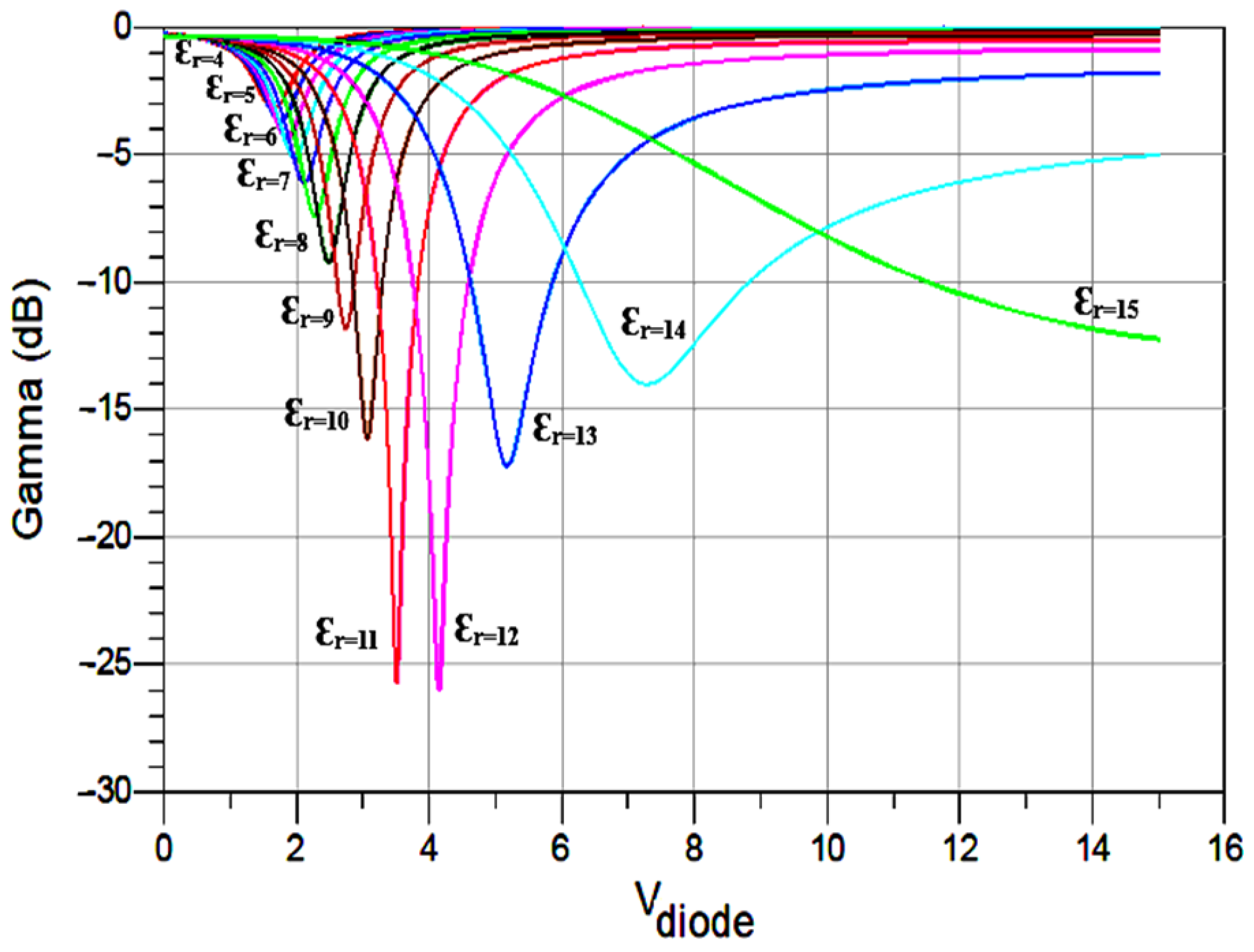


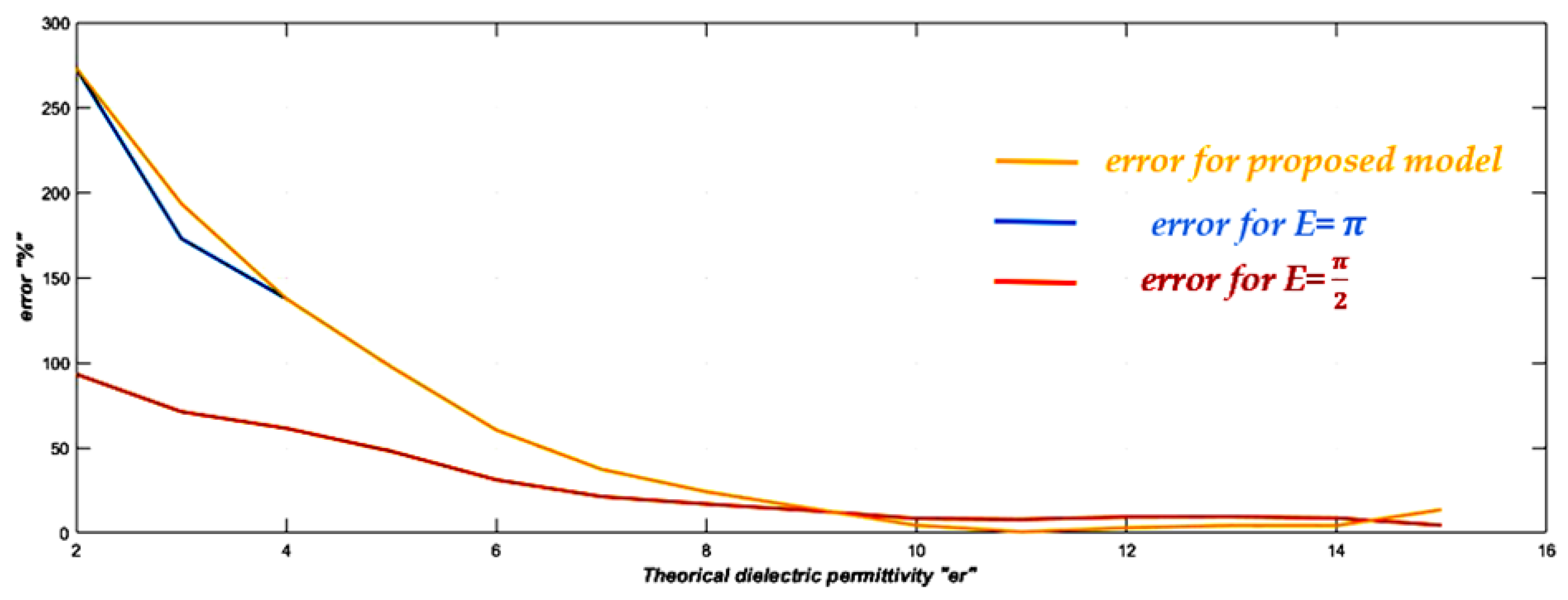
| Parameter | Value | Unit |
|---|---|---|
| Center frequency | 433 | MHz |
| Bandwidth | 125 | KHz |
| Coding rate | 4/8 | Bit |
| Spreading Factor (SF) | 12 | – |
| Output power | 14 | dBm |
| Lora Transmitter | Lora Receiver |
|---|---|
| RADIO SET FREQ 433,100,000 | radio set freq 433,100,000 |
| RADIO SET PWR 14 | radio set pwr 14 |
| RADIO SET RX BW 125 | radio set rx bw 125 |
| RADIO SET CR 4/8 | radio set cr 4/8 |
| RADIO SET SF 12 | radio set sf 12 |
| RADIO TX FF | radio Rx ok |
| Measurement Techniques | Advantages | Disadvantages |
|---|---|---|
| Coaxial probe | High accuracy for high-loss materials. High accuracy for high-loss materials. | Air gaps cause errors. Repetitive calibrations. |
| Transmission line | Suitable for high frequency. Support for both solids and liquids. | Cannot use below a few GHz, due to practical sample length limitation. Sample preparation is difficult (fills fixture cross-section). |
| Parallel plate capacitance | Measurements are easier. Suitable for high-loss materials. | Support for low frequency (best results). Electrode polarization effect. |
| FDR | TDR |
|---|---|
| Definition | Definition |
| The Frequency Domain Reflectometry approach is the foundation of the FDR sensor, a soil sensor. By transmitting a high-frequency signal into the soil and analyzing the properties of the returned signal, it calculates the soil’s moisture content. FDR sensors analyze the frequency response and translate it into a moisture content reading, using sophisticated circuitry and algorithms. | Based on the Time Domain Reflectometry technique, the TDR sensor is a soil sensor. By delivering a brief pulse signal into the soil and analyzing the properties of the reflected signal, it ascertains the soil’s moisture content. Based on how quickly the pulse signal passes through the soil, the TDR sensor determines the moisture level. |
| Advantages | Advantages |
| 1. The FDR sensor operates reliably in a variety of salinity and soil types. 2. With comparatively minimal impact on salinity and temperature, it can offer excellent accuracy and stability. 3. Generally speaking, FDR sensors last a long time. | 1. The TDR sensor is very stable and accurate. 2. Its impact on soil conductivity and temperature is negligible. 3. TDR sensors monitor moisture quickly and precisely. |
| Limitations | Limitations |
| 1. FDR sensors are more costly and sophisticated. 2. Specialized knowledge and abilities are needed for installation and operation. 3. Because of the resolution of the frequency response, FDR sensors are comparatively sensitive to variations in the conductivity of the soil material. | 1. Installing and using TDR sensors requires specialized knowledge and is costly. 2. In high-salinity soils, TDR sensor accuracy may be hampered. 3. Because TDR sensors require accurate time measurement and data analysis, they can be more susceptible to interference. |
| Parameter | Description | Value | Unit |
|---|---|---|---|
| Zero-bias junction capacitor | 85 | pF | |
| Junction potential | 10 | V | |
| M | Grading coefficient | 4.4 | - |
| Series resistance | 1.1 | ||
| Series inductance | 0.8 | nH | |
| Parallel capacitance | 2.6 | pF |
| Measurement Techniques | Advantages | Disadvantages |
|---|---|---|
| Coaxial Probe | High accuracy for high-loss materials. High accuracy for high-loss materials. | Air gaps cause errors. Repetitive calibrations. |
| Transmission Line | Suitable for high frequency. Supports both solids and liquids. | Cannot be used below a few GHz. Sample preparation is difficult (fills fixture cross-section). |
| Parallel Plate Capacitance | Measurements are easier. Suitable for high-loss materials. | Supports low frequency (best results). Electrode polarization effect. |
| Specifications | Value |
|---|---|
| Frequency | 433 MHz |
| Capacitance type | Circular |
| Radius of the capacitance | 10 cm |
| Thickness of the capacitance | 5 cm |
| Inductance | 0.9 nH |
| Varactor model | SMV1801 |
Disclaimer/Publisher’s Note: The statements, opinions and data contained in all publications are solely those of the individual author(s) and contributor(s) and not of MDPI and/or the editor(s). MDPI and/or the editor(s) disclaim responsibility for any injury to people or property resulting from any ideas, methods, instructions or products referred to in the content. |
© 2024 by the authors. Licensee MDPI, Basel, Switzerland. This article is an open access article distributed under the terms and conditions of the Creative Commons Attribution (CC BY) license (https://creativecommons.org/licenses/by/4.0/).
Share and Cite
Said, M.; Fattahi, J.; Ghnimi, S.; Ghayoula, R.; Boulejfen, N. Measuring Electromagnetic Properties of Vegetal Soil for Wireless Underground Sensor Networks in Precision Agriculture. Appl. Sci. 2024, 14, 11884. https://doi.org/10.3390/app142411884
Said M, Fattahi J, Ghnimi S, Ghayoula R, Boulejfen N. Measuring Electromagnetic Properties of Vegetal Soil for Wireless Underground Sensor Networks in Precision Agriculture. Applied Sciences. 2024; 14(24):11884. https://doi.org/10.3390/app142411884
Chicago/Turabian StyleSaid, Maroua, Jaouhar Fattahi, Said Ghnimi, Ridha Ghayoula, and Noureddine Boulejfen. 2024. "Measuring Electromagnetic Properties of Vegetal Soil for Wireless Underground Sensor Networks in Precision Agriculture" Applied Sciences 14, no. 24: 11884. https://doi.org/10.3390/app142411884
APA StyleSaid, M., Fattahi, J., Ghnimi, S., Ghayoula, R., & Boulejfen, N. (2024). Measuring Electromagnetic Properties of Vegetal Soil for Wireless Underground Sensor Networks in Precision Agriculture. Applied Sciences, 14(24), 11884. https://doi.org/10.3390/app142411884








